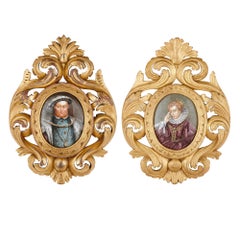Henry George Glyde
Henry George Glyde was significant to the development of art in Alberta, working in Calgary, Banff and Edmonton for over 30 years starting in 1935. He was born in Luton, Bedfordshire, on June 18, 1906. He was trained at the Brassey Institute in Hastings, where he first met his long-time associate Alfred Leighton and later, at the Royal College of Art in London, where he graduated in 1930. In 1935, at the request of Leighton who had already accepted a post at the Provincial Institute of Technology and Art in Calgary, Glyde and his family moved to Canada and he joined the Art Department as a drawing instructor. From 1936–45, Glyde pioneered the first Community art courses in the rural centers of Vegreville, Lethbridge and Grande Prairie along with Walter J. Phillips. The two artists shared the teaching of all classes while continuing to paint and exhibit their work. Glyde also taught at the Banff School of Fine Art from 1936–67. In 1943, he and A.Y. Jackson was selected by the National Gallery to document the construction of the Alaska Highway. Two years later, Glyde took over from Leighton as president of the Alberta Society of Artists and in 1946, moved to Edmonton to establish an art program at the University of Alberta. There, Glyde served as the Head of the Art Department for 20 years. Glyde was elected to the Royal Canadian Academy in 1949, and traveled to Europe in 1958 upon being awarded a senior fellowship from the Canada Council for the Arts. Retiring in 1966, he moved to Pender Island, with his wife, where he continued to paint, eventually receiving an honorary doctorate from the University of Alberta in 1982. Glyde’s work can be found in the permanent collections of the National Gallery of Canada, the Toronto Art Gallery, the Glenbow Museum and other public and private collections. He is known for his oil and mural paintings and his use of allegorical themes in his figurative and landscape paintings. By experimenting with texture and abstraction, Glyde created a distinctive reflection of Western Canada based on direct observation and interaction with its landscape and people. Glyde died in Victoria at the age of 91 on March 31, 1998.
Mid-20th Century Canadian Henry George Glyde
Watercolor
20th Century French Mid-Century Modern Henry George Glyde
Canvas
19th Century French Renaissance Revival Antique Henry George Glyde
Enamel
19th Century American American Classical Antique Henry George Glyde
Paint
19th Century English Antique Henry George Glyde
Canvas, Paint
Late 19th Century British Victorian Antique Henry George Glyde
Canvas
Late 18th Century English Neoclassical Antique Henry George Glyde
Canvas
1950s Scottish Vintage Henry George Glyde
Canvas
1960s French Modern Vintage Henry George Glyde
Paint, Canvas
1860s Spanish Antique Henry George Glyde
Canvas
1910s American Vintage Henry George Glyde
Glass, Wood
19th Century American Barbizon School Antique Henry George Glyde
Wood, Canvas, Paint
1960s French Mid-Century Modern Vintage Henry George Glyde
Canvas, Wood, Paint


